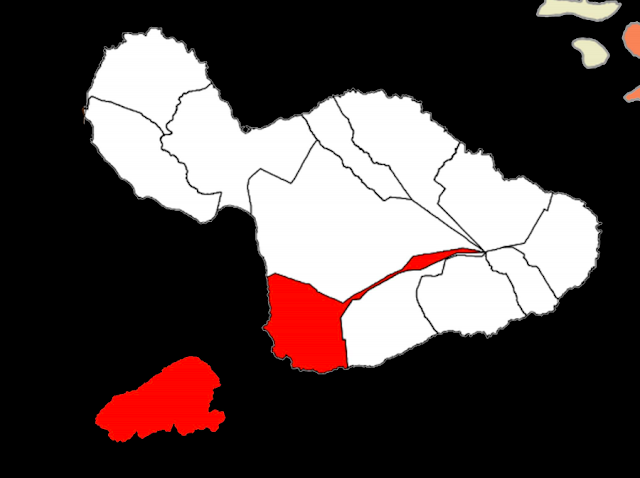Kanaloa- Part 2: the Ahupua'a ofKanapou and Keakana'alapa
Kaho'olawe, the entire moku, is part of the Maui district of Honua'ula. The water source from the summit of Haleakala filters toward Kanaloa in the form of the occasional rain and in the Naulu cloud bridge which stretches across the 'Alalakeiki channel between the two land masses.
I didn't know this, and yet part of me did know. I have participated as a volunteer in the work of the Auwahi Forest Restoration Project on the leeward slopes of Haleakala. I know that a key feature of that important work is the degree to which these forest systems in the ahupua'a of Kanaio, Luala’ilua, Kapuni, Alena and Auwahi are not only an irreplaceable sanctuary for biological and cultural resources, but as importantly, a site where people can learn about native forests and participate in their protection. The moisture-laden air that healthy lowland forest generate travels across the channel and into the low summit of Kanaloa at Moaulanui. There, the steady winds drive the moisture down the slope toward the western portions of the island. Today, after ranching and military activities have set in motion epic erosion and topsoils run-off, that little bit of precious moisture from Honua'ula is even more important.
My students will know this- THEY WILL KNOW that Maui and Kaho'olawe are connected and that we do the work to protect our leeward Haleakala forests as a gift of healing for Kaho'olawe. They will know about the countless hours put in by staff and volunteers who have sacrificed to stay on the 'aina to work in harsh, sometimes discouraging and always potentially dangerous conditions to help restore a landscape. These efforts are long-range. The work of activists 1970's from PKO to the young interns from Hui Kapehe of today will not be fully realized in our lifetime, or even for several generations to come. And yet, they work on and take pride and hope from every little positive sign of life renewed. They apply critical thinking and engineer ingenuity, mindful of the limiting factors and inspired by the possibilities that elegant solutions can bring unexpected success.
 |
| Restoration Specialist, Paul, explains various strategies used to introduce a'ali'i, pili and other natives to barren areas in uplands. |
 |
| 'aki'aki grass planted within landscape matting which traps some precious wind-blown topsoil. This native grass is used extensively for erosion control. |
 |
| Cradling pa'u o hi'iaka, the namesake of my hula halau- a beautiful and tenacious plant |


Comments
Post a Comment